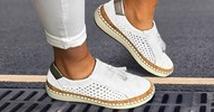Mile walk test. This I can pass, 25 minutes to the mile, goal was 26 minutes in other tests. and this is walking on trails in the woods.
How Long Should I Take to Walk a Mile?
IF YOU LIVE somewhere with sidewalks, you probably do your fair share of walking to get around. Even if you live in a more car-centric space, you likely have access to parks and other green space to take a stroll. Whether you think of walking as exercise or as a means to get from A to B, there are so many reasons to give your ambulatory habits some more focused attention.If you’re wondering how your current walking practice stacks up to how much—or how fast—others are moving, consider testing how long it takes you to walk a mile. That’s just one benchmark that walking coach Michele Stanten, founder of MyWalkingCoach.com and author of The Walking Solution, says could help to incentivize you to reach for your sneakers more often. Once you know how fast you’re walking and about how many steps you’re taking per mile, you can set walking goals that work for your lifestyle. Here's what to keep in mind.The Benefits of Walking
You’ve likely heard many times over about all the reasons you should prioritize walking, but they deserve repeating.
Walking Can Help to Boost Your Mood
“As soon as you get out there and you start moving your body, it reduces stress, [and] reduces tension,” says Stanten.
Walking Can Help Reduce Risk of Disease
Walking is cardiovascular exercise, and this type of exercise helps to reduce your risk of heart disease, diabetes, and lowers blood pressure, among other health perks, according to Stanten.
Walking Is Accessible
“Walking is so flexible and readily available,” she says. “You can do it anywhere — from home, from work. You can do it by yourself. You can do it with people. You can do it in short bouts, long bouts—there's so many different ways to walk.”
Walking Is Joint-Friendly Exercise
Movement gets blood flowing to working muscles and lubricates joints, which can ease pain and stiffness, says Stanten. “Walking is low impact,” she says. “So, if you have any kind of joint problems, it's still an activity that most people can do.”
Walking Is Good for Cross-Training
Even if you enjoy doing other types of exercise, walking is a simple and accessible way to stay active otherwise, she says. “It's a great cross-training modality for runners or anybody doing higher impact exercise.”
How Much Should You Walk Every Day?
Before you think about how much you should be walking or consider setting a goal, assess how much you’re currently walking, says Stanten. Go about your normal routine and track how many steps you’ve taken at the end of each day. Do this for a few days, and make sure at least one day is a weekday and one a weekend. Capture those results so you can have a baseline to increase from there.
You might be confused about exactly how many steps you should be getting every day. Is it 7,500, or is 10,000 still the magic number? Instead of thinking about step count, consider starting with the current Physical Activity Guidelines for Americans, which recommends 150 minutes of moderate-intensity physical activity and two days of muscle strengthening activity per week. For cardio, that correlates to about 30 minutes, five days a week, “which breaks down to three 10-minute walks a day, which is generally pretty doable,” says Stanten.
If you still find that counting steps is more motivating, she suggests trying to add another 500 or even 1,000 steps a day, if that feels doable.
How Long Should It Take to Walk a Mile?
Another way to track your walking fitness is to gauge how long it takes you to walk a mile. “In general most people will cover a mile somewhere between 15 to 20 minutes,” says Stanten. “Fifteen is on the faster side, but [for] people who are working out, that 15-minute-per-mile pace is very reasonable.” If you find that you’re closer to 20 minutes, and your goal is to walk a mile every day—or an additional mile daily— try breaking up your work into a pair of 10-minute walks, she says.
Ultimately, it doesn’t matter how long it takes you to walk a mile, or whether you walk that mile consecutively or throughout the day. Simply increasing the amount of activity in your life and cutting down sedentary time will help you attain those mind and body benefits.
How to Increase Your Walking Pace
If you’re interested in boosting your walking pace—whether to challenge your cardio fitness or just beat the train doors before they close—there are a few tricks and tips that can make a difference immediately, says Stanten.
Bend Your Arms
Think about it: “You don't run with our arms down at your side,” she says. “You're going to walk faster with your arms bent.”
Take Shorter, Quicker Steps
The biggest tip to improve your speed is to take short, quick steps, says Stanten. “When people try to walk faster, they automatically start to take these big long steps, and that actually slows you down, and it puts a lot more stress on your joints,” she says. Stepping directly in front of you allows you to roll through the middle of your foot and push off your toes to keep your stride smoother, she says.
Swing Your Arms Straight
Avoid swinging arms side to side or having them cross your body as you move, says Stanten. “Your hand should go back to about your hip and swing forward, but not above chest height.”
Keep Good Posture
"Stand up nice and tall,” she says. “Open up your chest. It's easier to breathe. Keep your abs tight; that's going to help.”
Pick a Target to Walk Toward
“People walk faster if they pick a spot ahead of them, and focus on that instead of looking around,” says Stanten. Pick someone who is walking ahead of you and try to mentally catch up to them.


 Fit&Well
Fit&Well



No comments:
Post a Comment